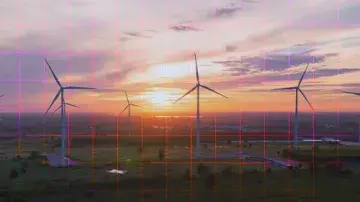
Populations across the nation and around the globe face increased loss of life, infrastructure damage, and economic cost due to natural disasters driven by climate change. Climate change is driving sea level rise and changing weather patterns, resulting in increased droughts, floods, hurricanes, and wildfires. New science-driven technologies are required to respond to the impacts of climate change, and these new technologies will create the opportunity for new job markets, stronger economies, and a more secure and stable United States.
Climate change has been identified as a major mission priority for the Department of Homeland Security (DHS) Science and Technology Directorate (S&T), which the research, development, innovation, standards development, and operational experimentation required to adapt and transition climate science research performed by other agencies into operational use. S&T applies this research to the long-term changes in risk from multiple hazards, such as flooding and hurricanes.
Scientific Solutions
In collaboration with the entire Department of Homeland Security (DHS), S&T is leading climate adaptation and resilience coordination efforts to formulate requirements for research and development of new insurance and economic risk-sharing solutions, smart materials for more resilient buildings and infrastructure, prototype alternative energy vehicles for disaster response, and carbon sequestration technologies for debris removal and risk reduction, such as thinning forest undergrowth.
S&T plans to foster affordable, innovative technologies, such as the research and development of self-healing materials and sensors for climate adaptation and resilience optimization. S&T will also encourage innovations that can help to better protect the American people from the impacts of climate change, including droughts and flooding, more frequent wildfires, stronger hurricanes, and other extreme weather conditions. With the help of S&T, communities will be able to reduce disruptions and mitigate risks to critical infrastructure and ensure more social and environmental equity in climate resilience. S&T innovations also aim to improve sustainability operations for DHS and critical infrastructure facilities, improve the resilience and security of critical information and communication technology, and promote eco-friendly solutions for strengthening climate resilience and reducing carbon emissions.
News
Resources
- Ammonia Port Preparedness and Emergency Response Fact Sheet
- Developing Innovative Research for Improving U.S. Levees and Dams Fact Sheet
- Exploiting Mesonets for Emergency Preparedness and Response to Weather Extremes
- Open Geospatial Consortium Strategic Partnership Fact Sheet
- Social Equity Data Needs and Its Access and Availability to Support the Disaster Resilience of Marginalized Communities Fact Sheet
